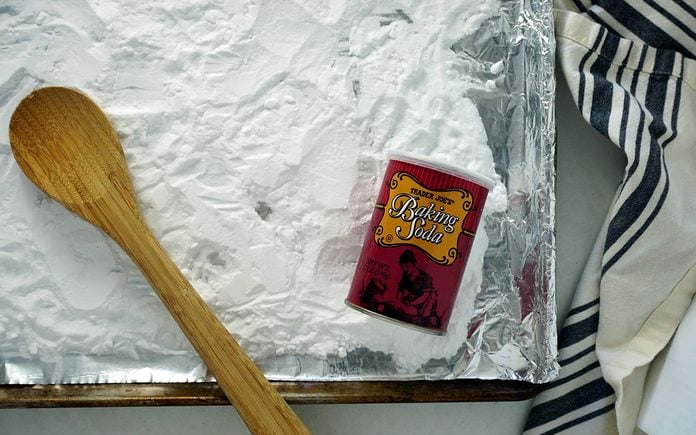Baked Baking Soda: The Secret to Better Homemade Pretzels
Updated: Nov. 29, 2023

Make your homemade pretzels (and ramen) with baked baking soda for improved taste, color and texture.
In our opinion, baking soda is the unicorn of all kitchen staples. Straight from the box, you can clean with it, bake with it, cook with it, brush your teeth with it and even use it as a deodorant. The magic of baking soda doesn’t end there, though. Did you know that when baked, baking soda gains even more magical properties? Keep reading to learn about the amazing applications of baked baking soda and how to make it at home.
If you’re a newbie (or not), here’s an article explaining the difference between baking soda and baking powder.
Why Bake Baking Soda?
Anyone who has made homemade pretzels with baking soda straight from the box knows that it’s near impossible to achieve quite the same appearance as the deep brown Bavarian pretzels you see in Germany. This is because traditional German pretzels are made with food-grade lye, a much stronger alkali that is also highly corrosive. While some home bakers are comfortable working with lye, it can be intimidating to work with (gloves and goggles recommended) and also a bit difficult to find.
The solution? Baked baking soda. When baked, the heat of the oven causes the molecules in baking soda to react with one another and give off water and carbon dioxide. This reaction removes about one-third of the water and carbon dioxide in baking soda, leaving behind a more robust sodium carbonate. In short, baking your baking soda turns it into a stronger alkali that more closely resembles the strength of food-grade lye. Isn’t food science cool?
How to Bake Baking Soda
Making baked baking soda couldn’t be easier. Here’s what you’ll need:
Ingredients
- 1 cup baking soda
Equipment
- Baking sheet
- Aluminum foil
- Conventional oven
- Airtight container
Directions
Preheat your oven to 250°F. Meanwhile, cover a baking sheet with aluminum foil and spread 1 cup of baking soda over the foil in a thin, even layer. Place the baking soda into the preheated oven and bake for 1 hour. Remove and let cool. Store in an airtight container, at room temperature, to prevent the baked baking soda from absorbing moisture from the air between uses.
Editor’s note: Baked baking soda may not be as caustic as lye, but it can still cause skin irritation. Avoid exposing your skin or eyes to baked baking soda. When in doubt, safety first. Suit up with rubber gloves and safety glasses when handling.
How to Use Baked Baking Soda
Now that you have a stash of baked baking soda in your pantry, you’re probably wondering what to do with it. Here are our two favorite applications.
Pretzels
As noted above, baking soda is a staple ingredient for making homemade pretzels. Dunking your pretzels in a baking soda bath prior to baking is what enables them to develop their distinctive color and crispy-on-the-outside, chewy-on-the-inside texture.
While straight baking soda works OK, using baked baking soda will help you achieve a richer, deeper color and better texture without having to use food-grade lye.
To make pretzels with baked baking soda, simply swap it 1:1 for regular baking soda in your favorite soft pretzel recipe. You’ll be amazed at the difference it makes!
Ramen Noodles
If you’re wondering why ramen in Japan (or at the best ramen restaurants stateside) tastes better, it’s because of alkaline salt. This ingredient can be found at select Asian grocery stores and is a key ingredient in making authentic-tasting ramen noodles. This special salt is mixed with water to make an alkaline solution called kansui, which translates to “alkaline water” or “lye water.”
This solution, when added to the ramen noodle dough, is what gives great ramen its glossiness and slippery exterior. Beyond appearance and texture, it also contributes to developing ramen’s unique flavor, due to how the solution interacts with the wheat flour in ramen.
You can make homemade ramen more accessible by skipping the alkaline salt and using baked baking soda in your recipe instead.
Now that you’ve unlocked the hidden powers of baking soda, read up on these other secret pantry ingredients that will make your recipes even better.
